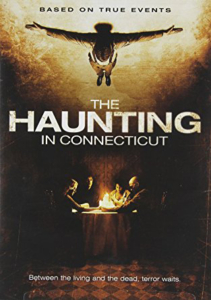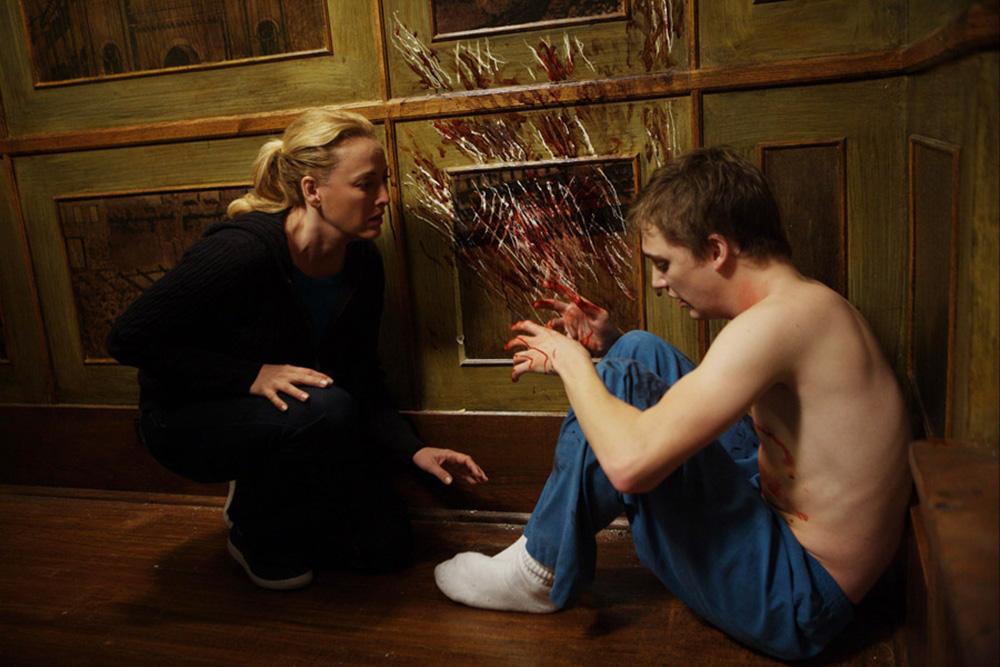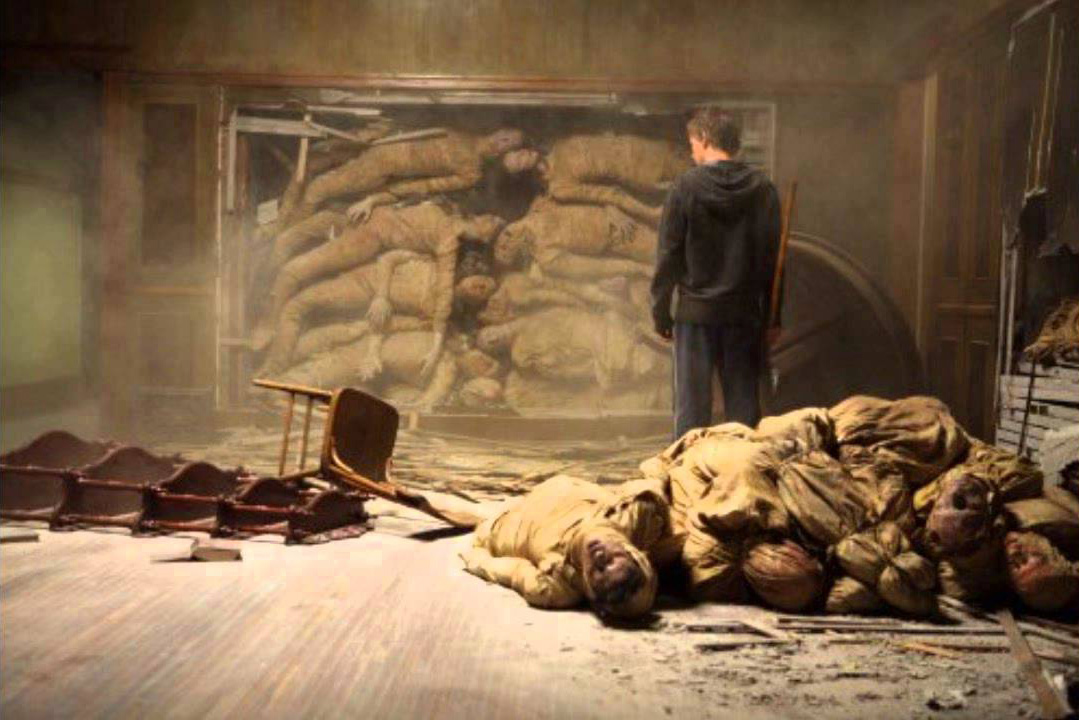Sickness and Sacrifice: We go beyond the surface scares and explore the deeper meaning behind The Haunting in Connecticut
In Inspecting the Horror, we look beyond the details of the set and focus more heavily on the story and the messages the story is trying to tell the audience. Dig deeper into the film and discover more meaning, more significance, and perhaps a different opinion.
Based on true events, The Haunting in Connecticut (2009; directed by Peter Cornwell and written by Adam Simon and Tim Metcalfe) is about a teenage boy, Matt, who is suffering from cancer and all the tumultuous treatments associated with it. His condition forces his family to move closer to his doctors and closer to their future struggles. Once inside their new home, they discover its roots and Matt connects with them on a much more personal, sinister level. The family slowly but surely starts to experience the unnatural and are forced to live with its terror until its resolved.
Side Note: This is the 2009 documentary featuring the actual family that the film was based upon:
What Makes ‘The Haunting in Connecticut’ Scary?
- Foreboding Death; Matt’s illness inevitably brings up thoughts and discussions of death and the anxiety associated with those are equally uncomfortable.
- The Good Die Young; Again, Matt is at high risk for departing sooner than he should, as he is only a teenager. Society is wholly against the death of children or anyone who has yet to “live life.” Audiences also see his mother’s and father’s different, but both bitterly saddening, ways of grieving and dealing with the difficulty of their son’s condition and their living situation.
- Lack of Faith; Religion often comes into play for supernatural films and for this particular story, it’s more relatable when directly involved with someone who is suffering from cancer, as unfortunately the vast majority of people have encountered it in some way or another. Saying things like “I’ll pray for you” or “You have to keep strong, you have to maintain faith” are all forms of religious speak and can sometimes feel cheapened when times are getting progressively harder. It’s natural for those suffering to question their faith as well, or even walk away from it completely. This idea can make some people fearful for the character on screen, as they feel without faith, the character is even more vulnerable.
- Wrongfully Accused; There are parallel stories in ‘The Haunting in Connecticut’; past and present. The physical history of the house was poorly hidden but the notoriety surrounding it was harder to discover. With the uncovering came names and faces and terrible, terrible truths. At the conclusion of the film, those whose reputations were smeared are set right, but the misunderstanding between the living and the dead can be frightening. Communication is undoubtedly difficult and some scenarios could only be believed if experienced firsthand. Therefore, if the channel is narrow, only bits and pieces of information can be given.
Dissecting the Messages
Anyone facing a terminal illness is confronted by questions of morality, religion, and the afterlife — especially someone of the age where they should be planning and outlining their future. In The Haunting in Connecticut, Matt is sickly and can’t interact with his siblings or his family as much as he’d like. He isn’t thriving in his youth like they are. He jokes about his condition and tries to hide behind that humor, but it’s clear to see that his suffering is taking a toll both on him and his mother, the person closest to him. He also harbors guilt for having been a financial burden on his family and being the reason why they were forced to move. So naturally, he comes isolated and becomes a target to the negative energies swarming the new house.
Once the family learns that a funeral home used to operate there, the son isn’t unhinged, as his thoughts have been on death throughout his decline. The imagery of Matt sleeping in the basement where the prep room is powerful, as it just personifies the thoughts that linger on his parents’ minds about their son and his looming passing. The message that evil spirits or energies act as real, pernicious diseases is throughout the movie, including when Matt begins to hallucinate and nobody else can see the images (a sick person feeling things that are unexplainable or unrelatable to their companions).
Once Matt becomes affected by the spirits in the house, his demeanor changes, mirroring the change an ill patient would undergo. The fact the he is sought out by them also highlights his weakened state and he chooses to keep his nightmares and thoughts to himself, as to not be an even bigger burden (again, like a sufferer not wanting to bother their caregiver.)
As The Haunting in Connecticut progresses, the feeling of danger increases with the appearances of ghostly figures, physical encounters, and instantly rotting fruit. This coincides with Matt’s condition; his parents are told at the hospital that his treatment has virtually done nothing and the fact that he was still alive was flabbergasting. Despite his downtrodden outlook on life and God, Matt knows about the innocent and evil spirits trapped in the house with his family. Even in his weakness, he has the courage and strength (with a little ghostly help) to save lives and restore a soul back to Heaven.
Matt changed by learning to value life again. At the climax of the film, he was ready to die and even stated that he’s dead anyway, regardless of whether or not he sits out of the fight. He was willing to sacrifice himself not only for his family, but for the souls of those victims that were tormented in the house. In this aspect, he values the life of his family and shows concern for the souls of those departed, clearly believing in an afterlife. He learns that life is worth fighting for, despite how weak in body or spirit you are, even if it’s not your own. Overall, he truly accepted death; not by cowering to it, but by facing it head on.
The true story of the Snedeker family doesn’t contain nearly as many ghastly images as the film about them; however, their journey through the ordeal undoubtedly shook their faith and rearranged their way of thinking about death and what can happen after you die.
Adaptions and inspirations must come from a source; and sometimes the source itself holds the most disturbing aspect of the story, one that can’t be outdone by fake blood or camera angles.





















Follow Us!